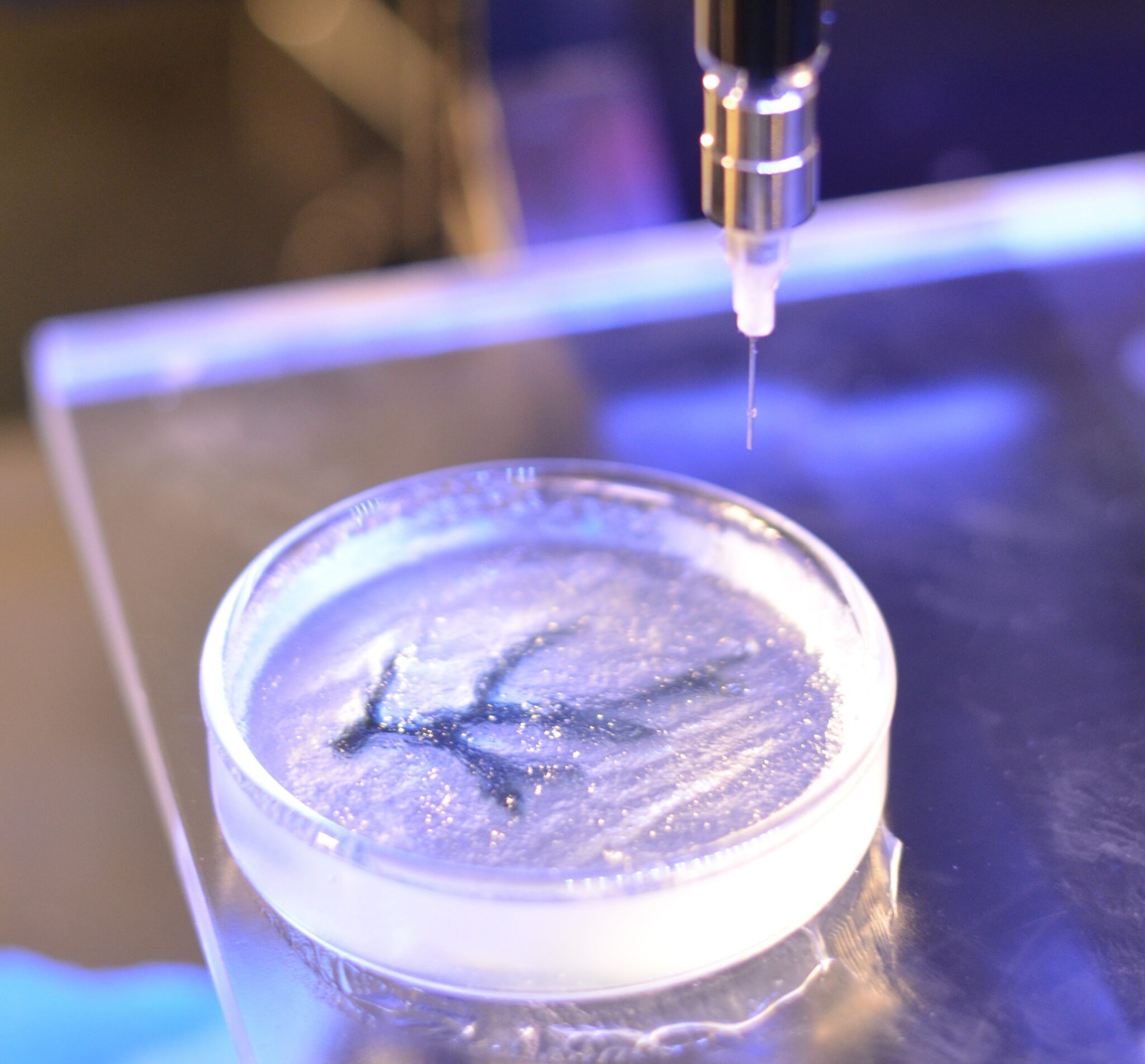In a study, published in a journal Advanced Materials, researchers from the École Polytechnique fédérale de Lausanne (EPFL) and Utrecht University developed a new technique, known as volumetric bioprinting, to create artificial organs and tissues. The technique allowed the researchers to sculpt complex tissue in a matter of seconds using biocompatible hydrogel containing stem cells.
Volumetric Bioprinting
To create tissue construct, the scientists used a laser and projected it down a spinning tube containing stem cell-rich hydrogel. They then sculpt the tissue by using the energy of light, directing it to the specific locations, and have it solidify. In a matter of seconds, the complex-three-dimensional shape appears in a stem-cell-laden hydrogel. Despite the use of laser, the stem cell did not get affected. The team then vascularized the tissue by introducing endothelial cells.
Volumetric bioprinting is a major breakthrough in the field of tissue engineering, allowing the researchers to create customized and functional tissue constructs several millimeters thick and could prove a boon for clinical research.
“The characteristics of human tissue depend to a large extent on a highly sophisticated extracellular structure, and the ability to replicate this complexity could lead to a number of real clinical applications,” says Paul Delrot, another coauthor
Tissue engineers can use this technique to develop and test new drugs, repair damaged tissue and even replace entire organs in the human body. The technique is used to build a meniscus, a heart valve-like material, and a complex-shaped part of a human femur. The process is also used to develop interlocking structures.
The technique is very fast as compared to other similar procedures and it does not damage the viability of the cell.
“Unlike conventional bioprinting — a slow, layer-by-layer process — our technique is fast and offers greater design freedom without jeopardizing the cells’ viability,” says Damien Loterie, an LAPD researcher and one of the study’s co-authors.
According to the researchers, their groundbreaking technique has the potential to fabricate artificial organs on a large scale and on a faster rate. The technique could prove beneficial not only in testing new drugs in vitro but also to wipe out the need for animal testing; hence lowering testing costs.
“This is just the beginning. We believe that our method is inherently scalable towards mass fabrication and could be used to produce a wide range of cellular tissue models, not to mention medical devices and personalized implants,” says Christophe Moser, the head of the LAPD.
Hence, the new research is certainly a quantum leap in the field of tissue engineering.

Sabeeka Zafar is a Bioinformatician-to-be with a passion to be a significant part of the great revolution in the near future in the field of Bioinformatics specifically and that of Science generally. Sabeeka is a social activist, enjoys working with people for the betterment of the society and loves to read and to write.

